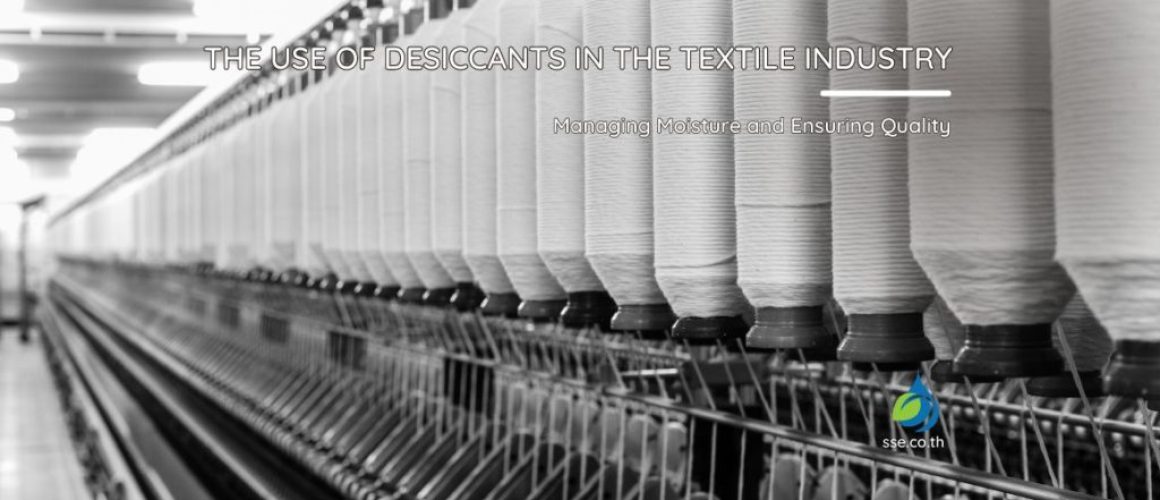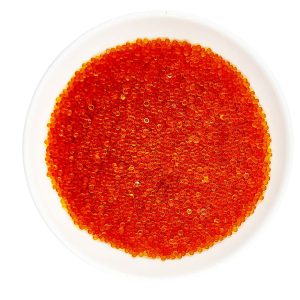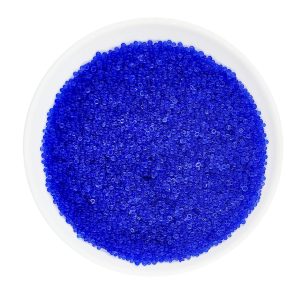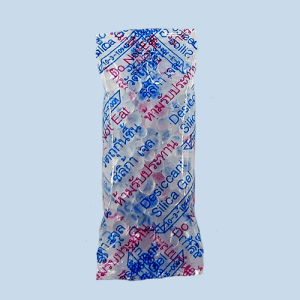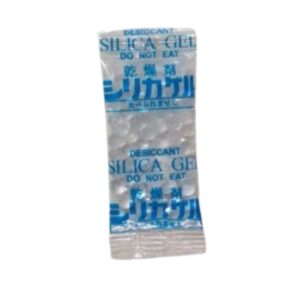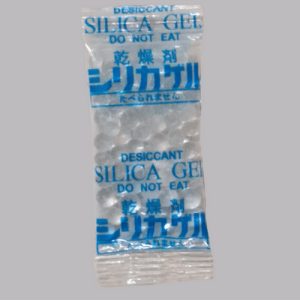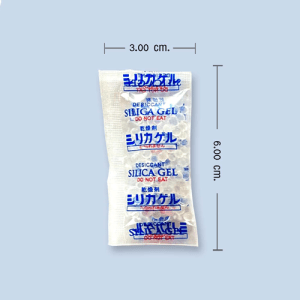The Use of Desiccants in the Textile Industry
Table of Content
I. Introduction to Desiccants in the Textile Industry
The textile industry is a significant global market, encompassing everything from clothing and home furnishings to industrial materials. Maintaining the quality of textiles throughout the manufacturing, storage, and distribution process is essential to ensure customer satisfaction and reduce waste. One critical factor affecting the quality of textiles is moisture control. In this article, we’ll discuss the importance of desiccants in the textile industry and explore strategies for effective moisture management.
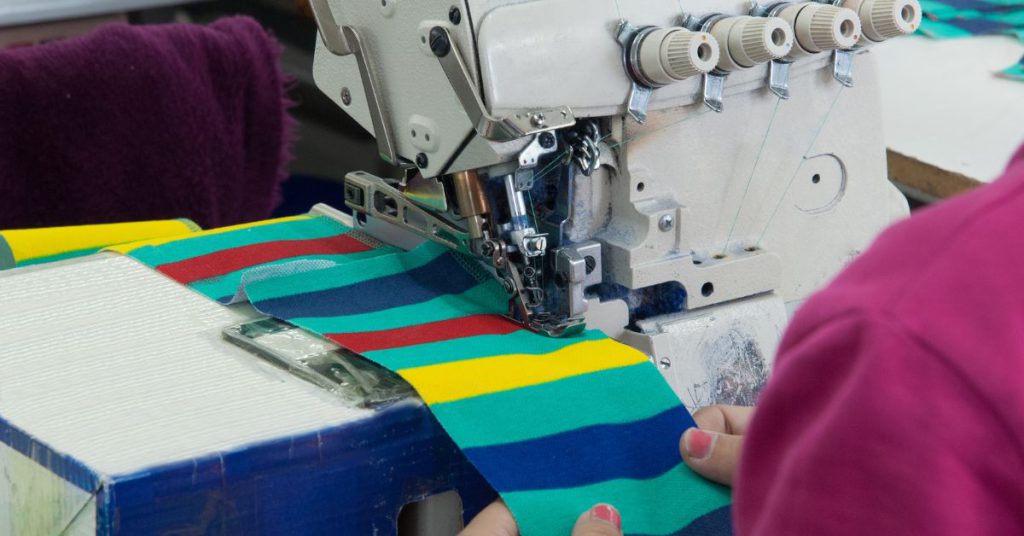
II. Effects of humidity in the textile industry
Humidity plays a significant role in the textile industry, impacting various aspects of the production process and the final product. High humidity levels can lead to several issues, including:
- Fabric preservation: Excessive moisture can weaken fibers, making them more susceptible to damage and reducing their longevity. Furthermore, high humidity levels can cause color fading and promote the growth of mold and mildew.
- Mold prevention: Mold and mildew thrive in damp environments, posing a threat to both the textiles themselves and the workers handling them. Mold can cause unpleasant odors, discoloration, and even health issues for those exposed to it.
- Humidity regulation: Inconsistent humidity levels can cause textiles to shrink or expand, impacting their overall dimensions and quality.
III. Common problems caused by humidity in the textile industry
Humidity can lead to a variety of challenges in the textile industry, such as:
- Deterioration of product quality: High humidity levels can cause textiles to lose their shape, color, and strength, ultimately reducing their value and appeal to customers.
- Slower drying rates: Moisture-laden air can slow down the drying process, impacting productivity and efficiency.
- Negative effects on heat transfer: High humidity can reduce the efficiency of heat transfer during various manufacturing processes, potentially leading to higher energy consumption and increased production costs.
.
IV. Silica gel and other desiccants in the textile industry
Desiccants, such as silica gel, are commonly used in the textile industry to help control moisture levels. These substances work by absorbing excess moisture from the surrounding air, creating a drier environment for textiles. Some benefits of using desiccants in textile packaging include:
- Preventing mold and mildew growth
- Preserving the quality and appearance of textiles
- Extending the shelf life of products
V. Strategies for moisture control in textile storage and warehouses
To maintain optimal conditions for textile storage and minimize the risk of moisture damage, it’s essential to implement effective moisture control measures. Some strategies to consider include:
- Maintaining optimal warehouse conditions: Regularly monitoring and adjusting temperature and humidity levels in storage facilities can help prevent moisture-related issues.
- Importance of a dry environment: Ensuring proper ventilation and using dehumidifiers to maintain a dry environment can significantly reduce the risk of mold growth and other moisture-related problems.
- Measures to prevent moisture damage: Utilizing moisture-resistant packaging materials and incorporating desiccants in packaging can help protect textiles from moisture damage during storage and transportation.
VI. Frequently Asked Questions
We’ve addressed some common questions about humidity and desiccants in the textile industry.
What is the effect of humidity in the textile industry?
Humidity can negatively impact the textile industry by causing color fading, mold and mildew growth, fiber weakening, and reduced product quality.
What are the problems with humidity?
Humidity can cause textiles to lose their shape, color, and strength, slow down the drying process, and reduce the efficiency of heat transfer during manufacturing processes.
What is the effect of humidity on cotton?
Humidity can cause cotton fibers to weaken, lose shape, and be more susceptible to damage, mold, and mildew growth.
How does humidity affect material?
Humidity can cause materials to expand or shrink, affecting their dimensions and quality. It can also promote mold and mildew growth, leading to deterioration and potential health risks.
How does humidity affect product quality?
High humidity levels can cause textiles to lose their shape, color, and strength, ultimately reducing their value and appeal to customers.
How does humidity affect clothes drying?
Humidity can slow down the drying process, as moisture-laden air takes longer to evaporate, impacting productivity and efficiency.
How does humidity affect drying rate?
Increased humidity levels can prolong the drying process, as the air is already saturated with moisture and cannot absorb additional moisture from the textiles quickly.
How does humidity affect heat transfer?
High humidity can reduce the efficiency of heat transfer during various manufacturing processes, potentially leading to higher energy consumption and increased production costs.
How does high humidity impact performance?
High humidity can negatively impact the performance of textiles by causing deterioration in quality, loss of shape, and the growth of mold and mildew.
Are humid or dry conditions most suitable for textile industries?
Dry conditions are generally more suitable for textile industries, as they help prevent moisture-related issues like mold growth, fiber weakening, and color fading.
Why is humidification necessary in some textile processing?
Humidification can be necessary in specific textile processes to prevent static electricity buildup, reduce fiber breakage, and maintain consistent dimensions during manufacturing.
What are the disadvantages of humidification?
The disadvantages of humidification include the potential for excessive moisture, leading to mold and mildew growth, reduced product quality, and increased energy consumption for maintaining humidity levels.
Why does cotton need humidity?
Cotton requires a certain level of humidity during processing to maintain its elasticity, minimize static electricity, and prevent fiber breakage. However, excessive humidity can cause problems like mold growth and fiber weakening.
How do you control moisture levels in the textile industry?
Effective moisture control strategies in the textile industry include maintaining optimal warehouse conditions, ensuring proper ventilation, using dehumidifiers, incorporating moisture-resistant packaging materials, and using desiccants in textile packaging.
VII. Conclusion
The use of desiccants in the textile industry is essential for maintaining product quality and preventing moisture-related issues. By implementing effective moisture control measures, textile manufacturers and distributors can ensure the longevity and appeal of their products, ultimately leading to greater customer satisfaction and reduced waste.
